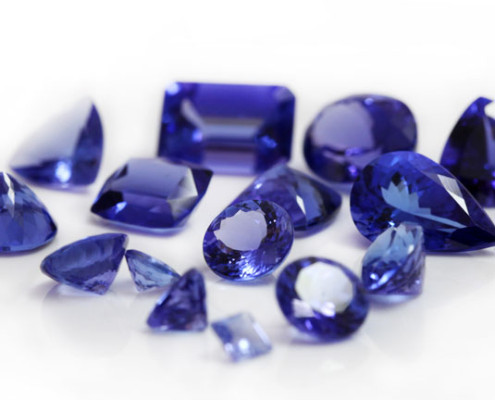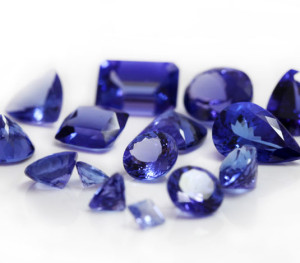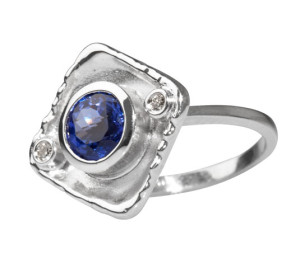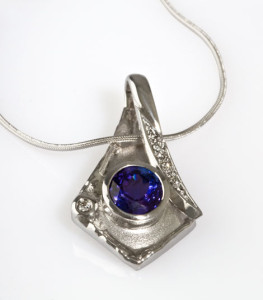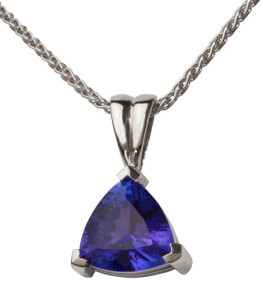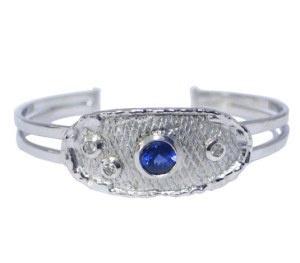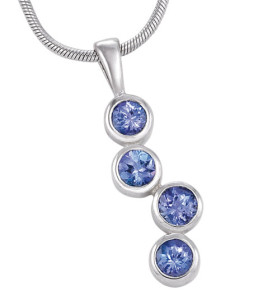
THE LEGEND
Born of fire to a land steeped in folklore, Tanzanite claims its place as the most mystical gemstone of modern times. Amongst the Maasai it is whispered that a magic fire from the sky set the land ablaze. The fire raged through out the night, transforming the brown zoisite rock into shimmering blue-violet crystals. When the smoke had cleared and the rain had washed the ashes away, the Maasai knew that the gods had blessed them and their lives would be forever altered.
A brief history
Tanzanite was first brought to the attention of jewellers in 1967*. Like many stories of discovery, the story of Tanzanite’s discovery is peppered with discrepancies. The most common narrative goes that Manuel de Souza, a tailor with a passion for prospecting was in the Merelani Hills in search of rubies. There, a Maasai tribesman, Ali Juuyawatu, introduced him to the blue-violet crystals. At first, de Souza was delighted, as he thought the stone to be an unusually vibrant Sapphire. But delight turned to displeasure when gemological tests revealed the stones differed from Sapphire in composition and colour. Little did he know that he’d stumbled upon what was to become the most unique gemstone known to man.
“Tanzanite is the most beautiful blue stone to be discovered in 2000 years.” Harry Platt, president of Tiffany & Co
It did not take long for the gemstone’s true value to be recognised. In 1968, the Massai crystal was christened “Tanzanite” by New York’s most famous jewellers, Tiffany & Co. * AFROGEM first began trading in precious stones in 1966, exactly one year before Tanzanite came onto the market. Coincidence? We prefer to think that we, like the Massai, were blessed.
Beyond rare
Tanzanite is found only in the foothills of Mount Kilimanjaro in Tanzania, East Africa. Extensive research has shown Tanzanite’s geology to be totally unique, making the odds of finding it outside the current production area a million to one. The mining area for Tanzanite is a mere four kilometers wide, and it is estimated that only thirty years of supply remain in the mine. These limits on supply mean that Tanzanite is one thousand times rarer than diamonds and becoming more precious every day.

Tanzanite is graded according to colour, clarity, cut and carat weight. The higher the combination of these characteristics, the rarer and more valuable your stone.

Tanzanite is trichloric and can show a dominance of either blue or violet. The colour quality and degree of saturation are important factors when grading Tanzanite. Depth of colour ranges from Vivid to Pale, with a ‘Blue’ or ‘Violet’ indicating a predominance of blue or violet hues, or a combination thereof. The dominant colour is mentioned last and is in bold e.g. BLUE-VIOLET.
The deeper the colour, the rarer the tanzanite. Larger stones are frequently darker and it unusual to find an intensely saturated stone under 5 carat’s in weight.

Clarity refers to any natural flaws and inclusions in the stone. Tanzanite ranges from Loupe Clean to Heavily Included. The more flawless the tanzanite, the more valuable it is.
LC – Loupe Clean EC – Eye Clean
LI – Light Included
MI – Moderately Included
HI – Heavily Included

Cut refers to a tanzanite’s brilliance, proportions and finish. An optimal cut ensures that the facets reflect light to create maximum brilliance. The more precise the craftsman’s cutting, the more valuable the tanzanite.
The final polish, symmetry and external characteristics of the stone are known as the FINISH
of the stone and are also graded.
A – Excellent
B – Very Good
C – Good
D – Fair
E – Poor

Carat Weight is the term used to measure a tanzanite’s weight. One carat has 100 points and weighs 1/5 of a gram. The depth of a stone affects Carat Weight and two seemingly identical tanzanites can differ greatly in Carat Weight.

Like all beautiful things, special care must be taken to preserve your Tanzanite and ensure it continues to appreciate in value. Treat your Tanzanite gently: it’s a delicate stone that does not like to be struck, subjected to extremes in temperature or exposed to harsh acids. Not so gently though: tanzanite is stable under normal wearing conditions and is resistant to the effects of heat, light and common chemicals.
Tips to preserve your Tanzanite jewellery:
- Wear your Tanzanite jewellery on special occasions and never during activities where the stone could be knocked, chipped or scratched.
- Store each item of Tanzanite jewellery (even individual earrings) separately in soft material pouches or padded bags.
- Tanzanite should be taken to a reputable jeweller to be professionally cleaned, though never in an ultrasonic cleaner. Avoid steam cleaning.
- The best way to clean your Tanzanite at home is to soak it in warm water containing 1 tbsp. of dish soap for 10-20 minutes. Loosen stubborn dirt (like old make-up or lotion) with an extra soft bristle brush like a baby’s toothbrush. Rinse in a gentle steam of warm water.
- Tanzanite is best set in less exposed pieces of jewellery like pendants or earrings, or in rings and bracelets in a low setting which will protect it.
- Take your jewellery to a reputable jeweller annually to check the setting.
- Tanzanite should first be removed from the setting when making alterations, repairing or resizing.


